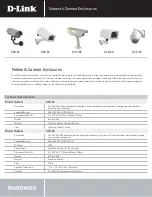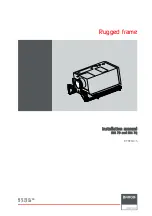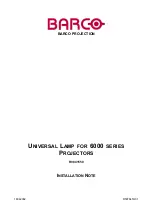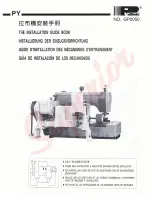
30
ENGLISH
Keep dry at all times. Never expose tool
to rain.
Any damaged or disposed electric or
electronic devices must be delivered to
appropriate collection centres.
Meaning of the labelling
Safety viewing panel tested in accordance with
DIN EN 166:
Explanation:
• External panel: GUEDE F CE
GUEDE = Manufacturer
F =
Mechanical strength
(Low-energy impact at 45 m/s)
DIN EN 166 = Testing standard
CE = CE label
• Rear panel: GUEDE 1 F CE
GUEDE = Manufacturer
1 = Optical class
F =
Mechanical strength
(Low-energy impact at 45 m/s)
DIN EN 166 = Testing standard
CE = CE label
ADF-tested in accordance with DIN EN 379: 4/5-
9/9-13 GUEDE 1/1/1/2/379 CE
Explanation:
4 = Lightness condition
5-9/9-13 = Darkness conditions
GUEDE = Manufacturer
Number 1 = optical class
Number 2 = scattered light class
Number 3 = homogeneity class
Number 4 = angle dependence class
DIN EN 379 = Testing standard
CE = CE label
Welding helmet shell:
:
GUEDE 175 F 500g CE
GUEDE = Manufacturer
EN 175 = Testing standard
B = Mechanical strength (120 m/s)
CE = CE label
Area(s) of application (where appropriate): S, F, B
Mass in grams (where appropriate)
Symbol
Protection type
Description of the area
of application
S
Increased
strength
Mechanical strength
F
Low-energy
impact
Mechanical strength
B
Medium-energy
impact
Mechanical strength
Battery
Risk of fire! Risk of explosion!
Never use damaged, defective or deformed accu-
mulators. Never open or damage the accumulator
or let it fall on the ground.
Never charge the battery in an environment with
acids and easily flammable materials.
Protect the battery against heat and fire.
Battery to be used at the ambient temperatures
between 10°C and +40°C only.
Never put the battery on heaters and do not expose
it to strong sunlight for a long time.
After being subject to heavy load, let the battery
cool down first.
Short circuit - do not bridge the accumulator con-
tacts with metal parts.
The accumulator must be packaged (plastic bag,
box) or accumulator contacts must be sealed up for
accumulator disposal, transport or storage.
The Güde charger to be used only to charge the battery.
There can be malfunction or fire if different chargers
are used.
Vapours may leak out in case of unauthorised use or
when using a damaged accumulator. Bring fresh air
and seek medical advice if experiencing difficulties.
Vapours may irritate the respiratory system.
Working Instructions
Accumulators are supplied partially charged and
must therefore be fully charged before being used for
the first time.
• Charge the accumulator when the appliance is
running slowly or stops.
• A li-ion battery may be charged at any time without
any shortening of its life. Charging process interrup-
EN
















































